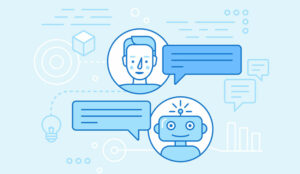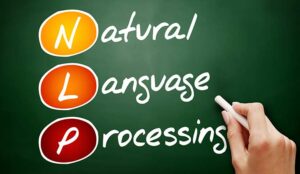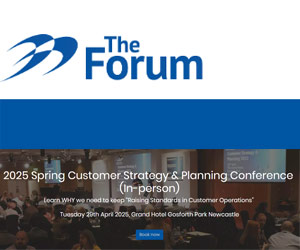Tomislav Krevzelj of Infobip discusses how Natural Language Processing (NLP) is helping chatbots become more human, and how this can help your business.
Humans seamlessly communicating with machines through speech. This idea inspired sci-fi writers Isaac Asimov and Karel Capek, who pioneered robotics conceptually and theoretically.
Finally, thanks to NLP, we have the ability to communicate with chatbots with human speech. Read on to find out why you need an NLP chatbot for your business, how they can benefit you, and how you can use them.
What is NLP?
Natural language processing (NLP) is an area of artificial intelligence (AI) that helps chatbots understand the way your customers communicate. In other words, it means enabling machines like chatbots to communicate the way humans would.
We already know about the role of customer service chatbots and some key benefits of using chatbots for your business – including supporting the safe return of workers to offices. But now, let’s take a look at chatbots supercharged with NLP, and all they’re good for.
Why is NLP Used for Chatbots?
NLP based on deep learning lets chatbots extract meaning given from customers. This means that a conversational chatbot can actually learn and develop phrases from your customers – resulting in a more natural conversational experience for customers.
From the customer’s point of view, NLP helps them feel understood. Chatbots use NLP to understand the customer’s intent, which they use to create helpful dialogue and improve understanding of customers’ questions.
This lets you build a brand voice while simultaneously providing a customer-centric approach.
With this increased understanding, chatbots can do more than provide simple answers – they can ask questions.
These queries for more information help chatbots learn more about customer intent and the reasons why customers contact businesses in the first place.
4 Ways NLP Chatbots Benefit Businesses
1. NLP Enables Natural Conversations
More than simple ones and zeroes, human expression is full of varying structural patterns and idioms. This complexity makes life difficult for a chatbot trying to understand human intents.
But this is where NLP comes into play. When trained well, a chatbot can understand language differences, semantics, and text structure.
Understanding and using these building blocks of human expression helps chatbots create a conversational experience with customers.
Customers prefer having natural flowing conversations and feel more appreciated this way than when talking to a robot.
This type of free-flowing conversation encourages customers to reply with more natural language, resulting in better interpretation.
2. Higher CSAT
We commissioned a survey about digital customer experience in 2020, and found that customers were most annoyed by long waiting times.
This is because we live in an age of instant answers and expect this convenience extended to us anywhere. So, when customers don’t get immediate answers, they get annoyed.
Chatbots provide instant answers. And when boosted by NLP, they’ll quickly understand customer questions to provide responses faster than humans can.
In addition to text, these chatbots can enhance the natural conversation experience by sharing helpful images (product images), videos (how-to videos, product explainers), map locations (store or service center finders), and more.
These lightning quick responses help build customer trust, and positively impact customer satisfaction as well as retention rates.
3. Reduced Agent Transfers
A chatbot that can create a natural conversational experience will reduce the number of requested transfers to agents.
This is because chatbots will reply to the questions customers ask them – and provide the type of answers most customers frequently ask. By doing this, there’s a lower likelihood that a customer will even request to speak to a human agent – decreasing transfers and improving agent efficiency.
4. Improved Chatbot Accuracy
Properly set up, a chatbot powered with NLP will provide fewer false positive outcomes. This is because NLP powered chatbots will properly understand customer intent to provide the correct answer to the customer query.
How NLP Works
To build an NLP powered chatbot, you need to train your bot with datasets of training phrases. We’ve mentioned how to do this before – a quick example would be “account status”.
To properly train your bot for phrase variations of a customer asking about the state of their account, you would need to program at least fifty phrases. And that’s just asking for the most basic account information.
It may sound like a lot of work, and it is – but most companies will help with either pre-approved templates, or as a professional service, help craft NLP for your specific business cases.
How Using NLP Helps Businesses
Support Safe Back to Work Initiatives
Chatbots have been used to support the safe return of workers to the office in post-lockdown scenarios. Since offices and other workplaces are gradually re-opening now and in the future, chatbots can provide workforces with helpful information for a safe, seamless return.
Back-to-office virtual assistants can provide information on safety requirements, shifts, helpful travel and safety tips – and anything else specific to your work environment that guarantees a healthy and secure return.
Airline Customer Support
Airliners have always faced huge volumes of customer support enquiries. Some more common queries will deal with critical information, boarding passes, refunded statuses, lost or missing luggage, and so on.
Airline customer support chatbots recognize customer queries of this type and can provide assistance in a helpful, conversational tone. These queries are aided with quick links for even faster customer service and improved customer satisfaction.
Provide Account Balance Information
A frequent question customer support agents get from bank customers is about account balances. This is a simple request that a chatbot can handle, which allows agents to focus on more complex tasks.
NLP chatbots can provide account statuses by recognizing customer intent to instantly provide the information bank clients are looking for. Using chatbots for this improves time to first resolution and first contact resolution, resulting in higher customer satisfaction and contact center productivity.
Conclusion
While chatbots can’t replace human agents, NLP is helping chatbots create the type of human experiences your customers value, while freeing up your agents to do what they do their best: create human interactions and customer relationships that matter.
Author: Guest Author
Published On: 4th Mar 2021
Read more about - Guest Blogs, Infobip



































